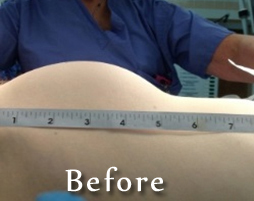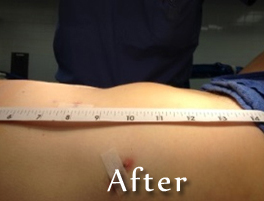
Robotic Myomectomy
Frequently Asked Questions
FAQ question/answers related to “Robotic Myomectomy”. Use the sidebar to visit other topics or contact us with your questions.
Need more information?
Fibroids are very common benign (not cancerous) tumors of the uterus and is seen in one out of 5 women in the reproductive age. In majority of these cases there is no symptoms caused by these fibroids and in many occasions the woman may never know whether they have a fibroid in their uterus. But on many occasions the fibroids may cause symptoms like pelvic pain, heavy menstrual blood loss, pressure symptoms, bowel and bladder problems and infertility. The type of symptom may be associated with the size and number of fibroids, location of the fibroid in the uterus and the vascularity of the fibroids.
There are many medical and surgical treatments available. The medical management usually involves use of long acting progesterone or Lupron as shots. There are other nonsurgical options like uterine artery embolization and focused ultrasound treatments which may be helpful but not recommended for women trying to conceive as it may affect the blood flow to the uterine lining. Robotic myomectomy is a surgical technique where the fibroids are removed through laparoscopy (“key hole” surgery) using a robot which gives high degree of precision and better reconstruction of the uterus after the fibroids are removed. Please click the video link below to watch how these procedures are done.


Robotic myomectomy with in-situ “remote morcellation” of fibroids total weight 1300 grams. Patient was a 29 year old female with 32 weeks size uterine fibroids.
Commonly Asked Questions
What are the common reasons for doing myomectomy?
The most common cause for performing myomectomy is due to pain, heavy bleeding and pressure symptoms in women who does not want to have a hysterectomy. Patient with infertility, recurrent miscarriages may also undergo myomectomy to improve their reproductive potential. We multiple success stories where the patient conceived spontaneously after myomectomy, many of who were suffering from repeated miscarriages and or failed to get pregnant after multiple infertility treatments.
What is the recovery time? How much is the pain?
The recovery time is more related to the approach for myomectomy, complexity of the procedure etc. For example a traditional abdominal myomectomy may take up to 6 to 8 weeks to recover while it is significantly lower with laparoscopic myomectomy usually 2 – 4 weeks and much faster with robotic myomectomy usually 1 – 2 week. The pain after surgery is much less with robotic and laparoscopic myomectomies.
My OB/GYN tells me that I need to remove my fibroids. How do I decide on the type of surgery I should undergo?
The decision to do myomectomy is a medical decision that is made in consultation with your doctor. The type of surgery is based on multiple medical factors like prior surgery you had, size, number and location of fibroids, associated medical conditions like diabetes etc and personal circumstances like how much time off work you can afford, post op pain that you could tolerate, abdominal skin scar etc. Please feel free to make an appointment to discuss these by Clicking here.
Once I have made the decision to undergo myomectomy what are the steps involved?
The first step is to make a pre-op consultation appointment with Dr. Jacob. You may call 314 473 1285 or Click here and register and make appointment (faster). At your initial visit, we will review all your past history and all the testing done so far. You may need an ultrasound scan to assess the size of the uterus, measure the fibroids and their locations and also to assess the blood flow to the fibroids.
Once the testing is done how soon I can get the myomectomy surgery done?
The Center follows a strict policy of first come first basis. Usually all surgeries are scheduled within 2 to 4 weeks. Patient wishes, availability of the robot at the hospital and insurance clearance for surgery are the usual factors affecting scheduling of the surgery. Hence we request all patients to provide us with the correct and up to date insurance information at your initial appointment.
Once the surgery is scheduled what should I do?
You will be asked to do pre – op testing usually one week prior to the surgery. This is usually done at the pre-op testing center at the hospital where you would have the surgery. You should stop all anticoagulation medications at least 1 week prior to the surgery and should not take pain pills like motrin, brufen, aspirn etc. You can take Tylenol. You should report to the hospital 2 hours prior to the surgery.
When can I go back to work?
Usually most patients can go back to light duty work (lifting less than 10 pounds) within 1-2 weeks after surgery. But everyone recover from surgery differently, some recover fast but some may take longer. Usually majority of patients can go back to work within 3-4 weeks of surgery.
When can I try for a baby?
It is recommended that patients after myomectomy should wait 3 – 6 months before trying to conceive. Patients have successfully conceived 3 months after robotic myomectomy naturally or after IVF treatment with no complications. The mode of delivery is usually made by your OB/GYN who is going to deliver your baby.